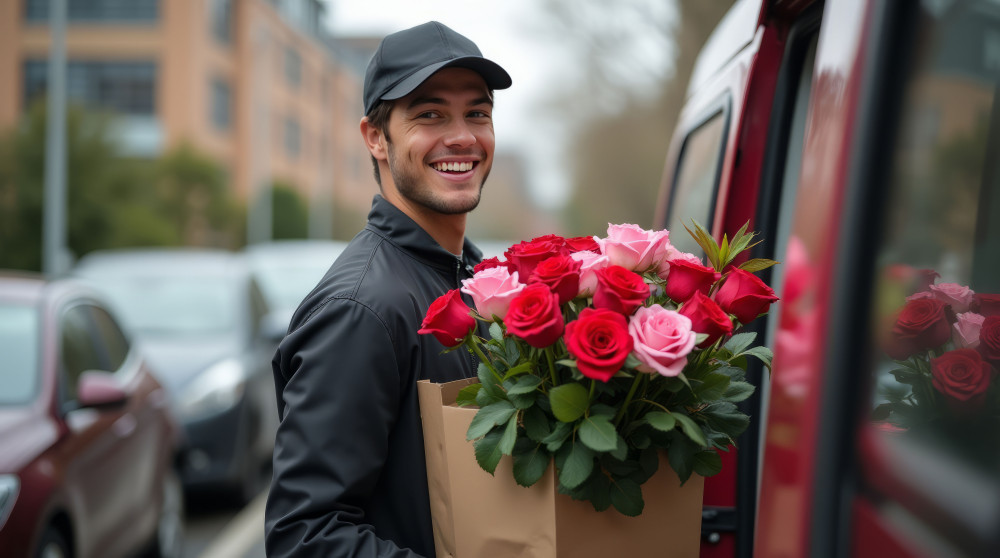
Why the last mile is the most expensive link and how to optimize it
In the flower business, delivery isn't just logistics; it's part of the customer experience. The customer doesn't care where the bouquet comes from—the important thing is that it's fresh, beautiful, and delivered on time. It's at the last mile—the final kilometer from the store or warehouse to the customer's door—that a business faces the greatest costs and risks.
Why is the last mile such an expensive link
The last mile in floristry is the final and most challenging stage of delivery. It's where all the factors that increase costs and create risks for the business are concentrated.
- Personalization of every delivery. Unlike mass-market products (clothing, cosmetics), flowers can't be packed in a standard box and passed on to the general supply chain. Each order requires individual packaging, careful handling, and a dedicated courier. This makes the process more expensive and less scalable.
- Speed is a key expectation. Customers are rarely willing to wait several days for a bouquet. Most often, "same day" or "in 2-3 hours" options are required. This necessitates hiring additional couriers and quickly adjusting routes. During peak holiday periods (February 14, March 8, New Year's), the workload increases several times over—and it is during these days that delivery costs reach record highs.
- Route unpredictability. A simple delivery from point A to point B in a florist's shop turns into a quest: traffic jams, a customer not answering the door, last-minute address changes. Each such deviation wastes time, fuel, and human resources, which cannot be accurately calculated in advance.
- Fragility and sensitivity of the product. Flowers require special transportation conditions: temperature control, securely fastened bouquets, and careful packaging. A courier error can ruin a bouquet in minutes. This necessitates specialized bags, boxes, and staff training.
- High levels of manual labor. While some warehouse processes (sorting and packing) can be automated, the last mile is almost entirely human-dependent. A courier is not just a "delivery person" but the face of the company, crucial to the customer's experience. Their work is expensive, and mistakes are even more costly.
- Lack of economies of scale. The more orders, the lower the unit cost of delivery in traditional logistics. But with flowers, it's the opposite: an increase in the number of orders equals an increase in the number of couriers, which means higher costs. Even large chains face the fact that the last mile doesn't scale as easily as sales.
According to research by logistics companies, the last mile can account for 40 to 55% of total delivery costs. For small florist businesses, this is especially significant: the margin is eaten up during the final kilometer.
How to optimize the last mile in floristry
1. Proper route planning
- Use routing services (Yandex.Routes, Routific, Locus).
- Create optimal delivery clusters by district.
2. In-house couriers vs. outsourcing
- In-house couriers know the product and brand better → higher service quality.
- Outsourcing is cheaper during the low season, but carries the risk of losing control.
- A combined model is the best option.
3. Time slots for customers
- The ability to choose delivery times reduces the number of "empty trips."
- More predictable courier schedules.
4. Mini-warehouses and pickup points
- In large cities, dark stores and pickup points are convenient.
- Reduces delivery distances and costs.
5. Use of technology
- Real-time online courier tracking.
- Automatic notifications for customers.
- Apps for couriers (routing, photo delivery).
6. Creating "boxed solutions"
- Arrangements that are easy to transport.
- Mini-bouquets or packaging that are durable for transport.
Optimization examples
- In Moscow, studios that implemented route planning using specialized software reduced delivery costs by 20–25%.
- In the regions, a hybrid model is popular: in-house couriers for peak holiday periods and outsourced delivery for the rest of the time.
- Stores that offer in-store pickup with a bonus (for example, a 5% discount) reduce the burden on delivery and increase loyalty.
The Future of Last Mile Floristry
- Drones and robot couriers still look futuristic, but testing is already underway.
- Combined deliveries. Flowers, sweets, gifts, and groceries in a single package.
- Eco-friendly models. Bicycle couriers and electric vehicles to reduce costs and maintain image.
- Maximum transparency. Customers can always see where their order is and evaluate the quality of service.
Conclusion
The last mile is the most expensive and vulnerable link in floral delivery, yet it shapes the customer's impression of the brand. A smart route strategy, a combination of formats, and the implementation of technology help reduce costs while maintaining a high level of service.
Your experience matters! Take a short survey and see what answers other flower business representatives gave. Take part




